Editor’s note: Daniel Bengtsson (the tall guy next to me) is a former Shanghai resident, a frequent visitor to Earth’s Greatest City, and an avid birder. Daniel left his mark on Shanghai birding with his Century Park All-time Bird List, which he began compiling in 2008. The list is the best record ever made of the birds of a major Shanghai park.
In this guest post, Daniel’s first for shanghaibirding.com, Daniel discusses the birding side of his latest trip to China. He introduces us to two important locations in Fujian: Ziyun Cun, a forest site good for Cabot’s Tragopan, and the Minjiang estuary, breeding area of the critically endangered Chinese Crested Tern. — Craig Brelsford
by Daniel Bengtsson
for shanghaibirding.com
As I spent more than two years in Shanghai over a five-year period (2006–2010), and since Shanghai is the birthplace of my wife and daughter, this huge city will always be my second home—a bit unlikely, perhaps, considering I was raised in the Swedish countryside.
My daughter is now 8, which means that we are limited to Christmas and summer breaks to visit the Shanghainese side of our family. We did our latest summer trip this past June and July.
Any time I’m in Shanghai, I visit Century Park, my “home spot” which I birded more than 50 times back in 2008. This past summer, I birded the park twice, on 23 and 29 June.
In contrast to other parts of Shanghai, Century Park has undergone little change over the years. This time, however, I noticed that Oriental Magpie-Robin had moved in. Other records of interest were singing Indian Cuckoo (2 birds seen), Eurasian Hoopoe with 2 fledged chicks, and Asian Brown Flycatcher (difficult to know whether it had already been to the breeding grounds and returned south or whether it had been delayed and was on its way north).
To add more birding flavor to the visit, I asked my wife and daughter to do a family-plus-birding trip with me to Fujian. On 5 July we flew from Pudong Airport to Sanming in western Fujian. We were picked up and driven to Ziyun Cun (紫云村, 26.359541, 117.492287). Like Emeifeng 80 km to the west, Ziyun Cun, elev. 800 m, lies in hilly, thickly forested, sparsely populated country. The peaceful village of 1,000 inhabitants was a welcome contrast to hot and humid Shanghai.
We stayed in a small family hotel which offered nice rooms and fresh, self-produced food at a very reasonable price. Birder Xiao Yang (小杨, +86 158-5982-8858) arranged driver and hotel. His parents run the hotel.
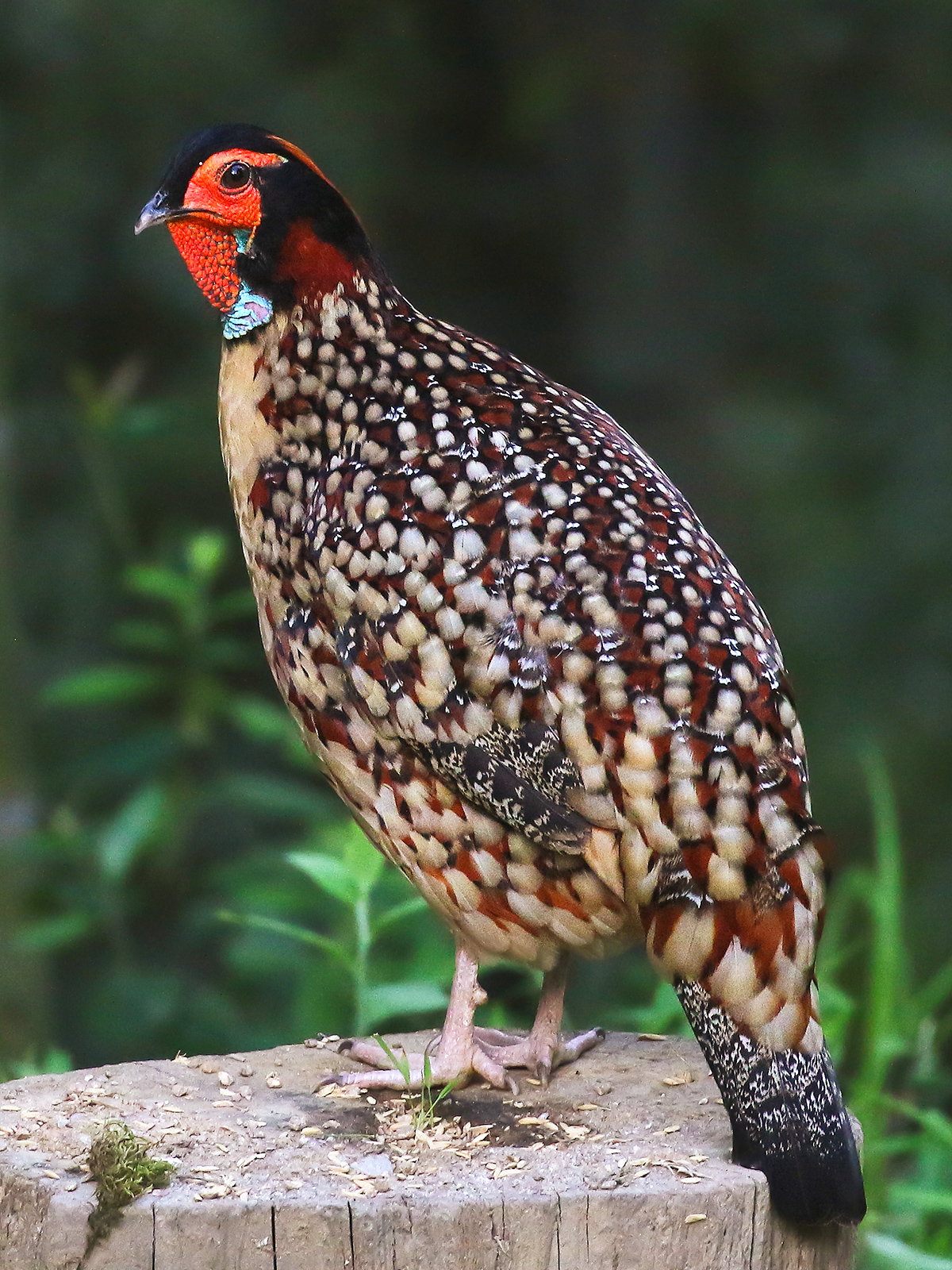
Among birders and photographers, Ziyun Cun is well-known for the temple on one of the nearby hilltops, often providing both Cabot’s Tragopan and Elliot’s Pheasant . Although Elliot’s Pheasant did not show during the two days I spent in the area, I got fine views of the tragopan as well as of Silver Pheasant and Chinese Bamboo Partridge.
Bird activity was low, and it was obvious that it was long gone into the breeding season. Though birds were calling little, I did manage to hear White-necklaced Partridge, Chinese Barbet, and Grey-sided Scimitar Babbler. Bay Woodpecker and Rufous Woodpecker showed nicely.
Night birds were more active. By walking from the village to the temple (1.5 km) before dawn, I heard Collared Scops Owl, Oriental Scops Owl, Collared Owlet, Asian Barred Owlet, and Grey Nightjar.
For 50 RMB another driver took us to the temple by car. This was a good deal when bringing my wife and daughter, since they would not have been too happy walking the steep track from the paved road up to the temple. Alongside the temple track, a stairway leads down to a different side of the hill. This side has better forest, and most of the birds were here.
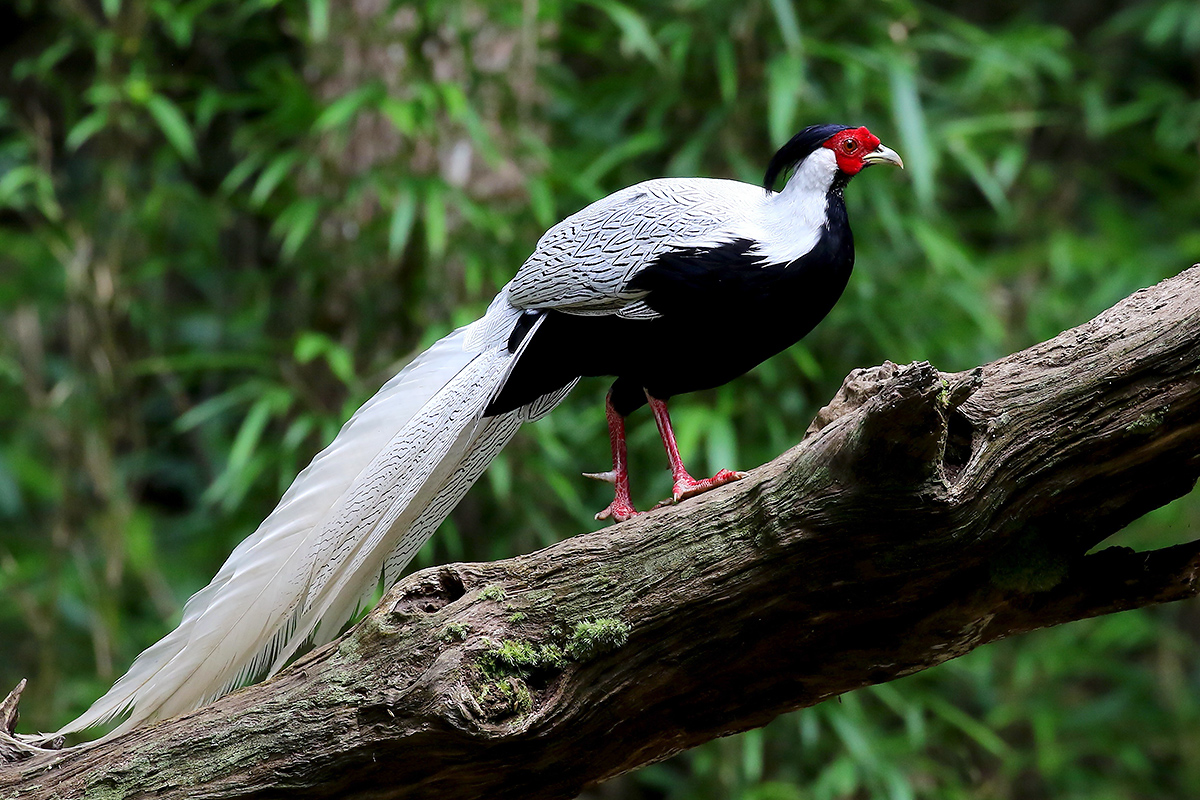
On the last morning, Xiao Yang’s father took me to a private hide at the base of the hill, where the better forest begins. Apparently this is too low for Elliot’s Pheasant, but it is reliable for Silver Pheasant (and sometimes Cabot’s Tragopan). The deal was that I would pay 100 RMB if I got to photograph either the pheasant or tragopan. (I recommend paying anyway, since this is a good way of supporting ecotourism!) The same deal goes for the hide at the temple.
After two nights in Ziyun Cun, we were driven back to Sanming. We were dropped off at the train station and took the high-speed train to Fuzhou.
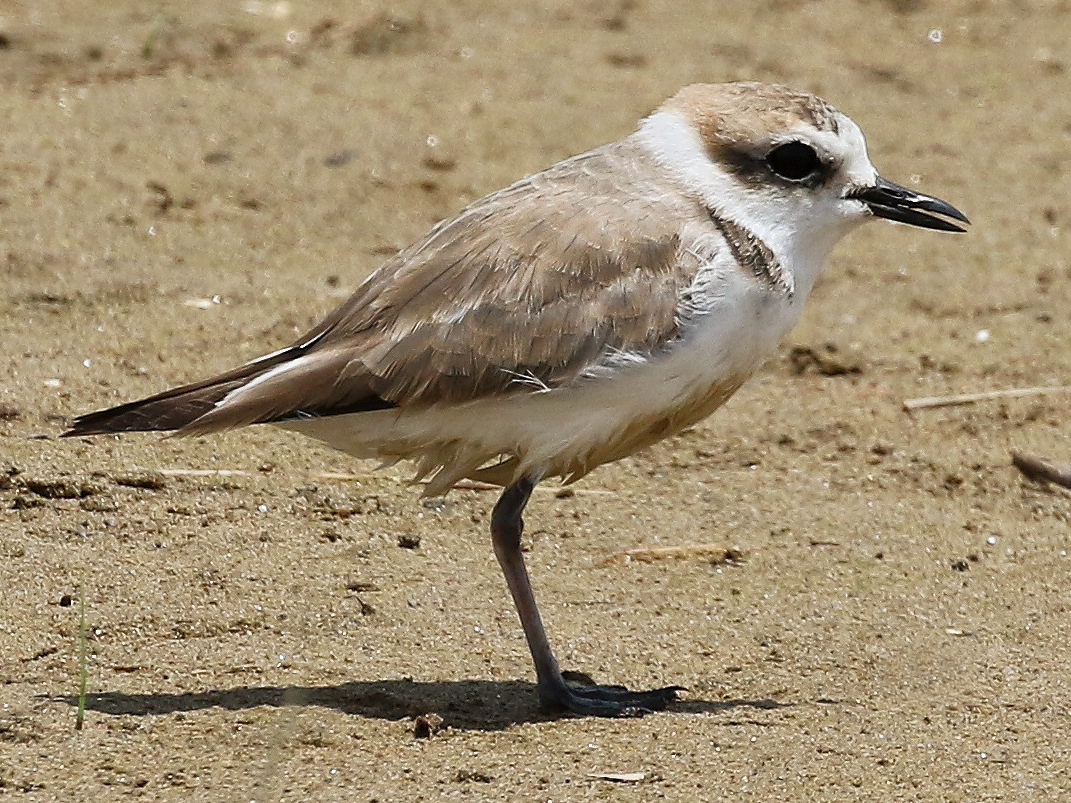
Two mornings later, on 9 July, through the kind arrangements of the Fujian Bird Watching Society, I was picked up for a two-hour drive to the Minjiang estuary (26.023600, 119.653200). The Minjiang estuary is the only reliable site in mainland China for the critically endangered Chinese Crested Tern, a species whose total world population probably does not exceed 50. The mudflats are also important as a stopover site for many waders, among them the critically endangered Spoon-billed Sandpiper. Another bird of interest to Shanghai-based birders is White-faced Plover Charadrius (alexandrinus) dealbatus, a member of the Kentish Plover clade. At Fuzhou it is probably close to the northern border of its breeding range.
Foreign visitors need a permit to enter the protected area. The fee of 1,000 RMB may seem high, but if it can help protect the mudflats and the birds relying on them for survival, then it is money well-spent.
Chinese Crested Tern breeds on islets in the Taiwan Strait. For bathing and drinking, the terns use the brackish water close to the mouth of the Minjiang River. They don’t come every day, though, and not outside the breeding season, which lasts from April to September. In fact, the rest of our party had tried the previous day without success. On this day, we were lucky to have 1 adult Chinese Crested Tern join the rest of the roosting terns. It stayed for less than an hour before taking off again, swooping down to drink a couple of times then heading for the strait.
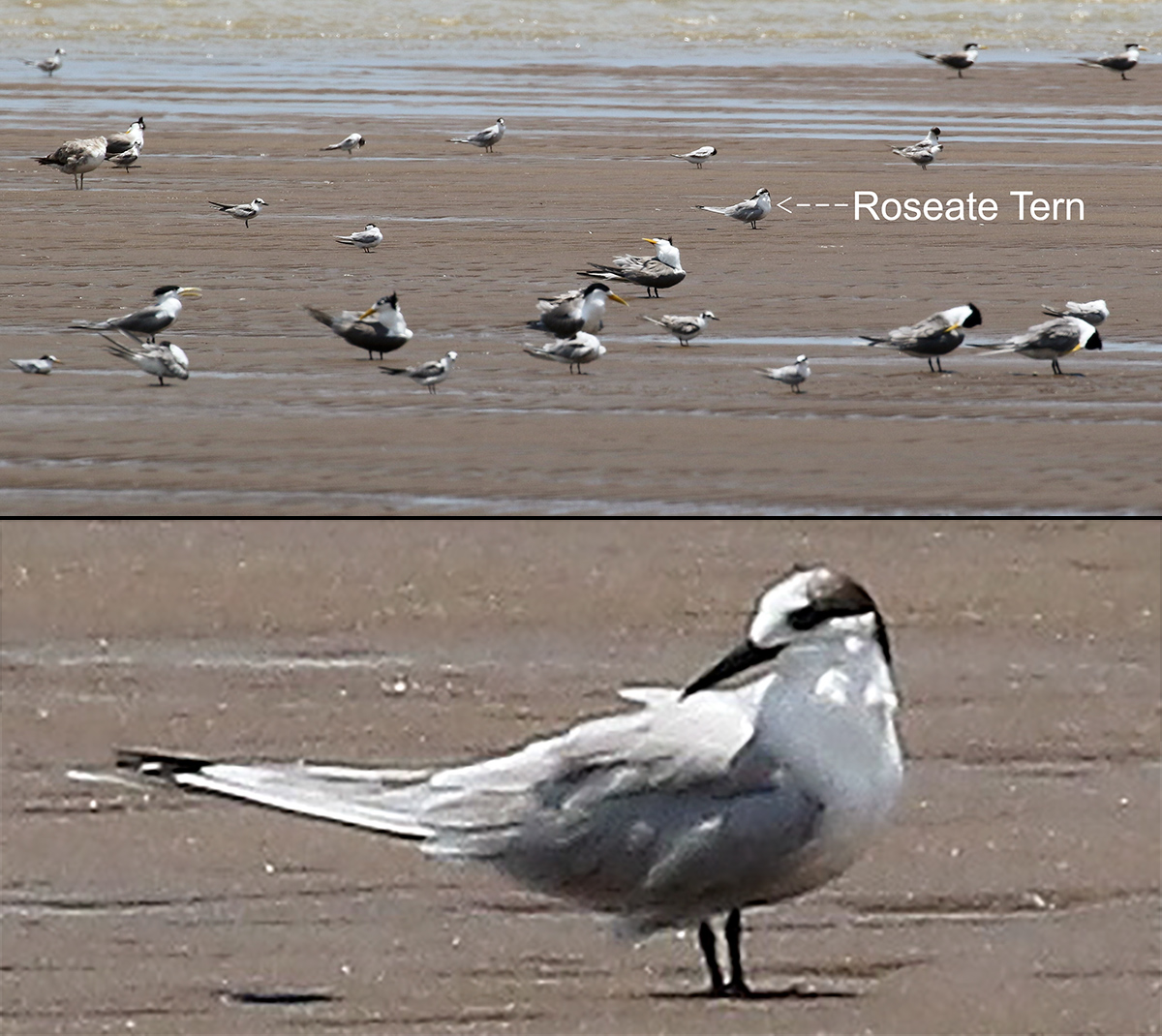
Other terns of interest were a couple of briefly visiting Bridled Tern as well as a few Roseate Tern (in both breeding and non-breeding plumages). Along with Common Tern, Little Tern, Greater Crested Tern, Whiskered Tern, and White-winged Tern, it all added up to eight species of terns in one day—a record for me.
The shoreline also provided 9 Black-faced Spoonbill and various species of wader, among them Grey-tailed Tattler, Terek Sandpiper, Great Knot, Red-necked Stint, Sanderling, Ruddy Turnstone, Pacific Golden Plover, and Greater Sand Plover. Some Sanderling and Red-necked Stint were in full breeding plumage, so I guess they had already made it up to the Arctic tundra and back.
Thinking of the amazing journeys these small creatures perform twice a year, and with the rarest of all species of tern in the bag, I strolled pleasantly through the muddy channels (helped by my waterproof sandals and zip-off trousers). The next morning we got on the high-speed train, and four and a half hours later we were back in Shanghai.
Featured image: Daniel Bengtsson and Craig Brelsford pose with their families. L-R: Daniel’s wife, Zhao Qing (赵清); Daniel Bengtsson; Daniel and Qing’s daughter, Linnea; Craig Brelsford; and Craig’s wife, Elaine Du. Shanghai, 2 July.

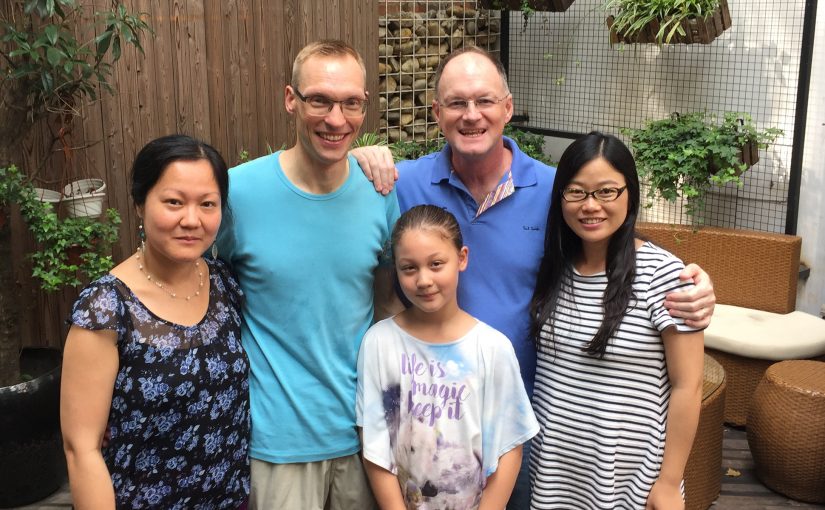
Hi Craig, I don’t think that’s a Roseate Tern. For a start they have bright orange legs and bills! I don’t see why it’s not a longipennis Common Tern?
Daniel, I was shocked at the change in the arrangements for visiting the Chinese Crested Tern site. There was no such charge 3 years ago when I visited. With the possibility I may return can you please tell me how and to whom this money is paid? I would normally have been expecting to simply hire a punt to cross the short distance to the island. It looks like this is no longer possible. Have you any further information on visiting this site for the independent birder? Dave.
David, As far as I understand the strict terms of the reserve are quite new. When contacting Fujian Birdwatching Society, I was asked to provide a copy of my passport. Upon arrival I was provided with a plastic card granting a one-day permit to enter the reserve. Unfortunately, I don’t think I have much more information than that to offer.
Hi Paul, thanks for your comment. Roseate Terns are not always straightforward to identify, especially in non-breeding plumage, when they have dark bill and legs (see for example the bird in the middle of this picture). There were many Common Terns around to compare with, so I could carefully confirm all the characters (see the picture caption). Structure was distinctly different from all Common Terns and exactly the same as the Roseate Terns in breeding plumage that were also present.